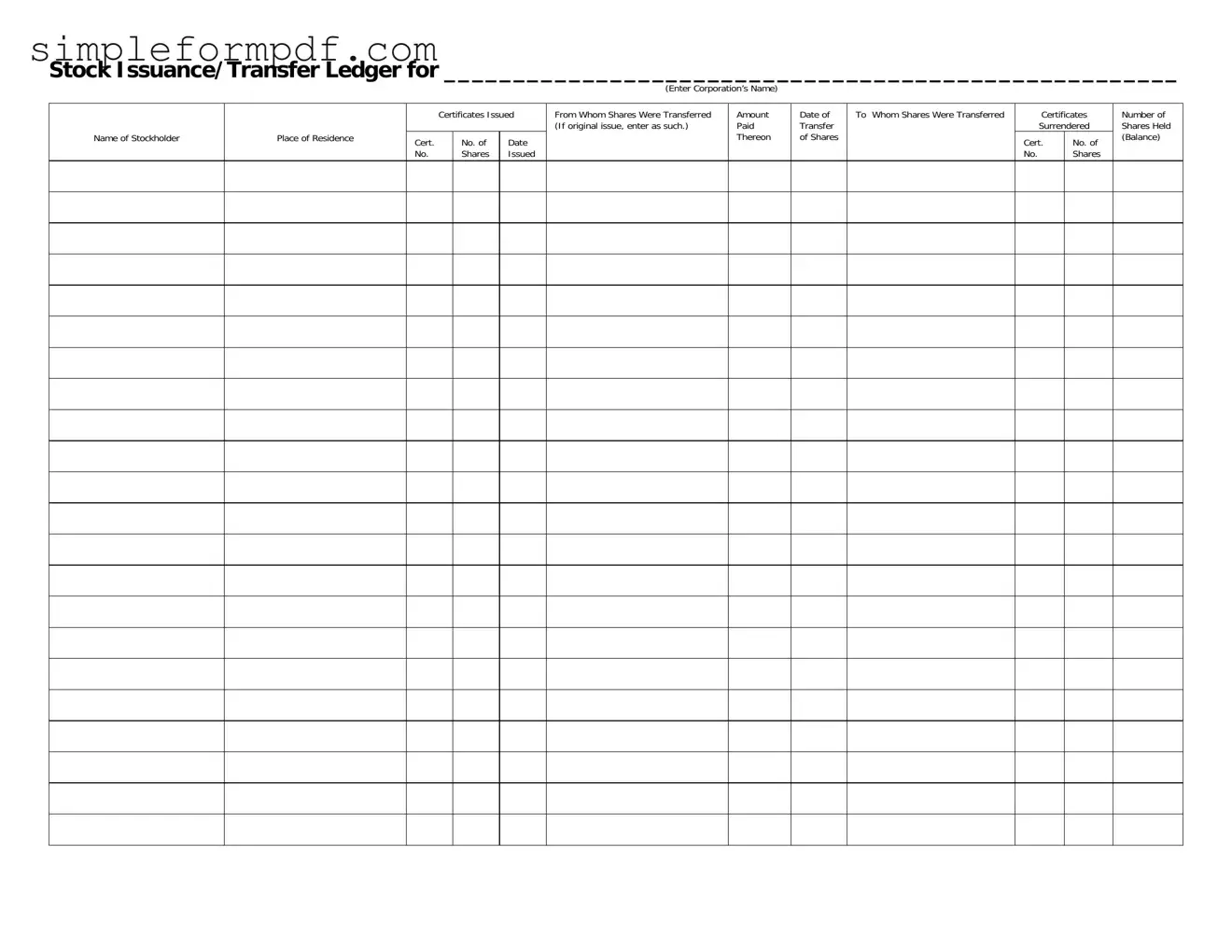Stock Transfer Ledger PDF Form
The Stock Transfer Ledger form is an essential document used to track the issuance and transfer of stock shares within a corporation. It records vital information such as the stockholder's name, residence, certificates issued, and details about the transfer of shares. Ensuring this form is accurately filled out is crucial for maintaining clear ownership records.
To complete the Stock Transfer Ledger form, please click the button below.
Launch Editor

